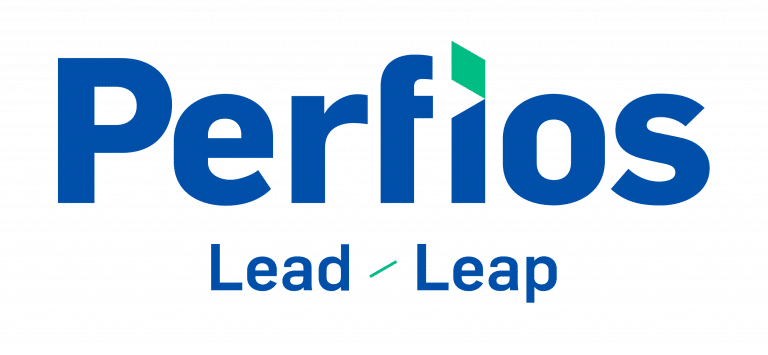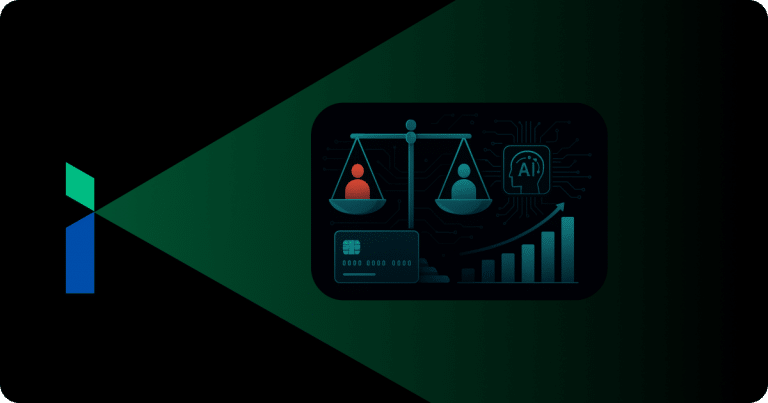Identity verification stands as a cornerstone of secure and efficient onboarding processes, especially in sectors like banking, fintech, and government services. At the forefront of this revolution in India is the Aadhaar Verification API, a tool leveraging the unique 12-digit Aadhaar number linked to an individual’s biometric data. This API has become increasingly pivotal in streamlining identity verification, ensuring both accuracy and speed.
As of 2023, the fintech sector in India is on a trajectory to reach a staggering $1.3 trillion by 2025, with Aadhaar Verification API playing a crucial role in this growth. The API’s impact is further highlighted by the sheer volume of transactions it facilitates. In April 2023 alone, Aadhaar e-KYC witnessed over 250 million transactions, a testament to its widespread adoption and reliability. This massive scale of usage underlines the API’s effectiveness in simplifying and securing the onboarding journey, making it an indispensable tool in the digital landscape of India.
Understanding Aadhaar and Its API
Aadhaar, India’s biometric-based unique identification system, has achieved remarkable coverage, becoming an integral part of the country’s socio-economic fabric. As of 2023, the Aadhaar system has reached an impressive saturation level, reflecting its widespread acceptance and usage across the nation. For instance, in the Andaman and Nicobar Islands, Aadhaar saturation stands at 96.27%, indicative of the system’s deep penetration even in remote regions.
The Aadhaar API, a critical component of this ecosystem, plays a pivotal role in leveraging this extensive reach. It allows seamless and secure access to Aadhaar’s database for verification purposes, thereby facilitating a myriad of applications ranging from financial services to government subsidies. The API’s robust framework ensures that the verification process is not only swift but also adheres to stringent security protocols, safeguarding individual data privacy. This combination of widespread coverage and a secure, efficient API has positioned Aadhaar as a cornerstone in India’s digital infrastructure, revolutionizing how identity verification and citizen services are delivered.
The Onboarding Challenge
In 2023, the landscape of onboarding processes, particularly in sectors like banking, telecom, and government services, faces significant challenges, primarily due to traditional methodologies. One of the most pressing issues is the reliance on manual paperwork, which not only slows down the process but also increases the risk of errors. According to recent statistics, the average new hire is burdened with approximately 41 administrative tasks, a clear indicator of the inefficiency plaguing traditional onboarding systems.

Moreover, 88% of organizations do not have an optimal onboarding process, leading to longer assimilation times and potential dissatisfaction among new recruits. This inefficiency is not just a human resource issue but extends to customer onboarding in various industries, where the lack of streamlined processes can lead to customer frustration and increased dropout rates. The need for a more efficient, secure, and user-friendly onboarding process is evident, and this is where technologies like Aadhaar Verification API are making a significant impact, offering solutions that address these challenges head-on.
Aadhaar API in Action
In 2023, the Aadhaar API emerged as a transformative tool in identity verification, significantly impacting various sectors. Aadhaar e-KYC transactions, for instance, witnessed a 22% jump in November, while Aadhaar Verification transactions grew by 11%, with a total of 28.75 crore eKYC transactions. This surge is a clear indicator of the API’s growing acceptance and reliability in the market.
The Aadhaar API’s impact is particularly notable in the banking and financial sectors. By the end of March 2023, the cumulative number of Aadhaar e-KYC transactions in these sectors reached new heights, underscoring the API’s critical role in simplifying customer onboarding and verification processes. This has not only enhanced operational efficiency but also significantly reduced the time taken for customer verification, thereby improving the overall customer experience.
In January 2023 alone, Aadhaar authentication transactions soared to an astounding 2 billion, reflecting its widespread acceptance and integration into everyday transactions. This massive scale of adoption highlights the API’s effectiveness in offering a secure, streamlined, and user-friendly verification process.
Perfios, a leading player in this domain, has further innovated the use of Aadhaar Verification API. In March 2023, Aadhaar holders executed numerous transactions using Perfios’s API, which simplifies the verification process into a straightforward 3-step Aadhaar QR verification. This ease of use, combined with robust security measures, positions Perfios’s Aadhaar Verification API as a key player in the identity verification landscape, offering a seamless and secure solution for businesses and individuals alike.
Real-World Applications
The Aadhaar API, in 2023, has found extensive real-world applications across various sectors, demonstrating its versatility and effectiveness. One of the most significant applications is in the banking and financial services sector. The Aadhaar Enabled Payment System (AePS) is a prime example, which facilitated over 219.3 million transactions in March 2023 alone. This system allows bank customers to use Aadhaar as an identity to access their respective bank accounts and perform basic banking transactions like balance inquiry, cash withdrawal, and remittances through a Business Correspondent.
Another vital application is in the telecom sector, where the Aadhaar API is used for instant verification of customers. This has drastically reduced the time for activating new connections, enhancing customer experience, and ensuring compliance with regulatory norms. Additionally, in government services, Aadhaar API is extensively used for the distribution of subsidies and benefits. It ensures that the benefits reach the intended beneficiaries directly, thereby reducing leakages and ensuring transparency.
In the healthcare sector, Aadhaar API is being used to create unique patient identities, which helps in maintaining medical records and providing personalized healthcare services. This is particularly crucial in rural areas, where maintaining patient records has always been challenging.
Furthermore, Aadhaar API is also being leveraged in the education sector for student verifications, streamlining admission processes, and ensuring the rightful distribution of educational scholarships and benefits.
These diverse applications of Aadhaar API underscore its role as a cornerstone in India’s digital infrastructure, offering a secure, efficient, and scalable solution for identity verification across various sectors.
Overcoming Challenges and Limitations
The Aadhaar API, while transformative, faces its share of challenges and limitations, which are being actively addressed in 2023 to enhance its efficacy and security.
1. Privacy and Security Concerns: One of the primary concerns with Aadhaar API has been the safeguarding of individual privacy and security. The closed nature of Aadhaar’s software development has raised questions about the adequacy of privacy protection.
To address this, continuous improvements in encryption and data handling protocols are being implemented. The focus is on strengthening the security framework to prevent unauthorized access and data breaches, ensuring that individual privacy is not compromised.
2. Integration with Existing Systems: For many organizations, especially banks, integrating Aadhaar Verification API with their existing systems poses a significant challenge. The process requires not only technical adjustments but also compliance with regulatory standards. To overcome this, organizations are increasingly seeking collaborations with tech experts and adopting flexible platforms that can seamlessly integrate with the Aadhaar API, thereby ensuring a smoother transition and efficient functioning.
3. Operational Challenges: Operational challenges, such as handling high volumes of verification requests and maintaining system stability, are also prevalent. The API needs to be robust enough to handle peak loads without compromising on speed or accuracy. Upgrading infrastructure and optimizing algorithms are part of the ongoing efforts to enhance the API’s operational efficiency.
4. Addressing Misuse and Fraud: The potential for misuse and fraud in identity verification is another challenge. To counter this, the Aadhaar system is continuously evolving with features like biometric authentication and OTP-based verification, adding layers of security to prevent identity theft and fraud.
5. Educating Users and Stakeholders: Educating users and stakeholders about the safe and effective use of Aadhaar API is crucial. Awareness campaigns and training programs are being conducted to ensure that users are well-informed about the benefits and safe practices related to Aadhaar API usage.
Conclusion
As we move further into 2024, the Aadhaar Verification API continues to play a pivotal role in shaping India’s digital landscape. The growth trajectory is not just a testament to the API’s current success but also a strong indicator of its future potential.
The increasing reliance on digital solutions across various sectors, from banking to healthcare, positions the Aadhaar API as a key facilitator of secure and efficient identity verification processes. Its ability to adapt to evolving technological landscapes and regulatory requirements further solidifies its role as an indispensable tool in India’s digital infrastructure. Looking ahead, the Aadhaar API is set to continue its trajectory of innovation and integration, further enhancing the ease and security of digital transactions and identity verifications across the nation.
About Perfios:
Perfios Software Solutions is India’s largest SaaS-based B2B fintech software company enabling 1000+ FIs to take informed decisions in real-time. Headquartered in mumbai, India, Perfios specializes in real-time credit decisioning, analytics, onboarding automation, due diligence, monitoring, litigation automation, and more.
Perfios’ core data platform has been built to aggregate and analyze both structured and unstructured data and provide vertical solutions combining both consented and public data for the BFSI space catering to their stringent Scale Performance, Security, and other SLA requirements.
You can write to us at connect@perfios.com
For more Such information contact us@ https://solutions.perfios.com/request-for-demo














